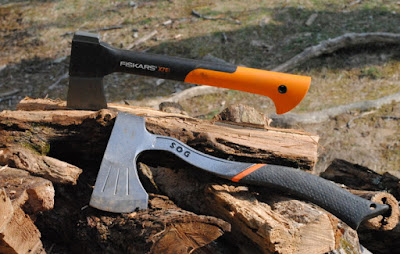Let's go meandering!
I just had another person ask me if my Spydercos were
real.
I’m getting tired of this.
I am an honorable knife dealer and would not sell you a knife you didn’t
want, just to make a sale. Nor would I
sell you a counterfeit or broken knife.
I buy from one of the largest wholesalers in the country and they buy
directly from the knife makers.
I’m going start telling those asking me that question, “If
you want to buy counterfeits, you’re going to have to go elsewhere.”
This is a growing problem.
Last January, Spyderco sued the Kittery Trading Post for selling counterfeit
Military and Paramilitary identified by Kittery as Spyderco clones. Now maybe you think it’s cool to own a counterfeit,
after all you paid $35 for a $100+ knife.
Until it fails, breaks or you find you have to sharpen it all the
time. Maybe you trade that counterfeit to
a buddy (who you really don’t like, otherwise why would you take advantage of
him?) for something they have or to settle a loan.
But you know, you’re hurting the knife community. You’re making a statement about what kind of
person you are and what kind of people you want as friends… I hope you eat shit and die on your birthday.
Thread Vs Tread
Thread means a fine cord made of two or more twisted
fibers.
Tread means to trample on or crush underfoot. It’s also the part of the tire contacting the
ground.
Language changes, so I looked them up in the Encarta Dictionary just to make
sure I knew the differences..
I just saw the back of his sweatshirt. It had a very nice libertarian statement
about being race, religion, and gender blind and emphasizing a true patriot
loves his country but not necessary his government.
I agree with many of the things sweatshirt stated. It ended with the famous quote from the
Gadsden Flag that even non-history buffs surely remember.
But the real quote is “
tread on me.” and not as his sweatshirt stated, “…thread on me.”
Perhaps it’s a quote from a historic group of embroiderers.
Kydex continues to rule in the knife sheath and gun holster
world. It has a lot of advantages and a
few disadvantages. It doesn’t stretch
out of shape, rot from exposure to water or corrode brass fittings because it
doesn’t have leather’s fatty acids and it’s strong and difficult to
puncture. I really like the puncture
resistance aspect. A fall in the
outdoors can be dangerous enough, but cutting yourself because the knife split
its leather sheath can be fatal.
Having said that, leather is quiet and doesn’t make a
scratchy sound when brambles brush across it.
I saw a kydex worker at the last Medina gun show and he had
an interesting partial solution to the holster/sheath dilemma. You know what that dilemma is, don’t you?
The problem any holster seller has is never having the right
holster or sheath and too many of the ones nobody wants. Add the problem of color or design and it’s a
small wonder anyone wants to sell holsters/sheaths.
This maker had several large clamshell-like wooden crates on
wheels containing his kydex press, sander, band-saw, buffing wheels, jig-saw
and heat source. It was like bringing
your factory to the show. Next to him he
had a table with several previously made holsters for some of the more common
guns. He had just finished making a
knife sheath when I came by. He also did
a very nice, compact holster for a Sig with a light on it.
I didn’t ask prices, but it can’t be cheap to make holsters/sheaths
during the show and have to transport all that equipment. Still it’s an interesting development.
I suspect the real answer to custom-fit holsters/sheaths
will be a laser scanner interfaced to computer driven 3-D printer. You read it here first!













